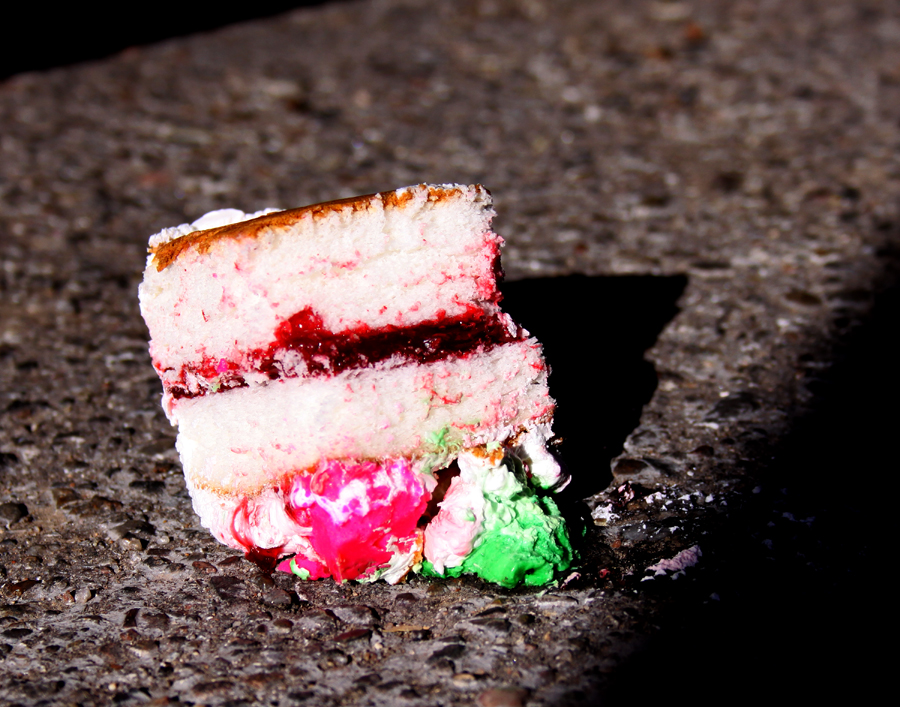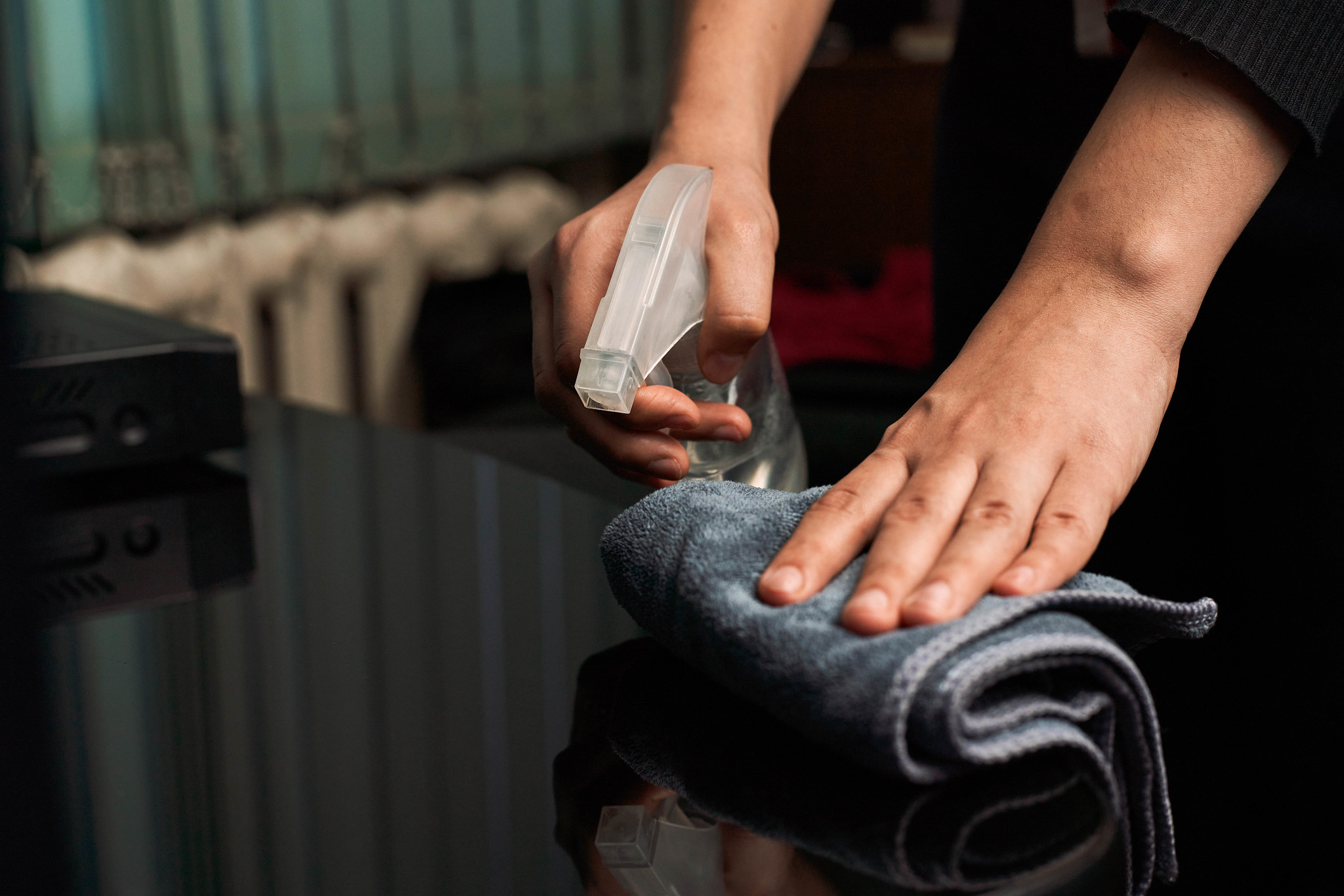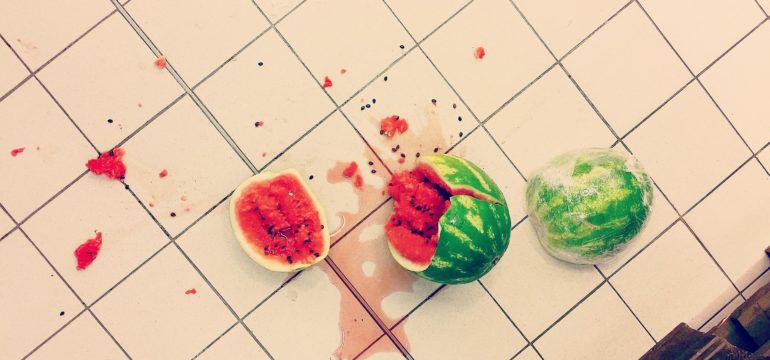By Hafida Mazoud
You’ve probably heard of the “five-second rule”, which states that food dropped on the floor for less than five seconds can still be consumed. Many of us follow this rule without knowing whether it is true and supported by scientific evidence, or whether it is just a myth passed down through generations. What happens when food falls on the ground? Do the germs hesitate to contaminate the food and needs five seconds to make up their minds?
When you drop a dry food item, such as a cookie, we pick it up, blow on it a little, and inspect it before biting into it. However, if we spill a juice, we do not bring a straw and try to drink it. According to researchers Dr. Miranda and Dr. Schaffner, the speed and intensity of bacterial cross-contamination are determined by three major factors: the type and texture of the food (whether it is wet, dry, flat, or dented…), the type of surface on which it has fallen (wood, carpet, tile…), and finally the exposure time.
Watermelon, bread, buttered bread, and gelatine bears were the four food products tested in this study. Watermelon was discovered to accumulate the most bacteria on its journey to the ground. Tests were also carried out to determine which type of floor material is the safest, and stainless steel, ceramic, wood, and carpet were all put to the test. Contrary to popular belief, carpet is the safest flooring option when compared to other materials because it absorbs bacteria and thus has a lower percentage of bacteria transfer to food.

Cake on cobblestones by Sharon Sperry Bloom on Flickr.
On one hand, Dr. Miranda and Dr. Schaffner demonstrated that cross-contamination occurs in less than one second, disproving the five-second rule and confirming that other factors such as food type and surface are sometimes more important than exposure time. On the other hand, a more recent study by Dr. KIM Dan-Bee and CHA Seong-Soo confirmed also that contamination occurs when food is exposed to different surfaces, but not at alarming levels, and the found values were low and in accordance with the Food Code requirements. They also investigated the effect of washing contaminated food with water, which was proven to reduce the initial microbial load. The tests were conducted on food that had been left in contact with various surfaces for three seconds, and the bacteria that were identified were all non-pathogenic bacteria, thereby refuting the rule.
The five-second rule oversimplifies the complex process of microbe transfer from the surface to food that scientists are working to identify and describe. Certain foods, especially those high in macronutrients and micronutrients required for microbe proliferation, such as raw meat, fish, and cheese, are more prone to contamination. As a result, even if the microbe is not harmful, the precautionary principle must be followed. This is especially important because the longer a food remains on the ground, the more bacteria it collects. Food that has been on the ground for one second is always less contaminated than food that has been on the ground for five or ten seconds.

Sanitising surfaces by Marco Verch Professional on Flickr.
The danger of eating food that has fallen on the floor is primarily related to where it occurs more than how long it occurs. If you are in a hospital and your drop your chips, it is best to throw them away and not eat them. As hospitals contain microbes that are resistant to antibiotics and can cause nosocomial infections. Similarly, if you drop food on the bathroom floor, you would not even consider inspecting it. Dr. Dawson and his colleagues demonstrated how Salmonella Typhimurium can survive for up to 4 weeks on what might seem to be a clear and dry surface before being transferred to food that has been dropped on the surface. The researchers’ main recommendation for preventing foodborne illnesses was to focus on surface hygiene and thorough cleaning rather than thinking about how long the food was on the floor.
The five-second rule’s strength could be attributed to psychological beliefs rather than microbiological facts. When everyone accepts wrongdoing, it relieves guilt and serves as an excuse for the misbehaviour. Even though the five-second rule has been debunked by some studies, we don’t have to throw out all of the food that has fallen on the floor and contribute more to the food waste epidemic, especially since our bodies can fight and defeat a good number of microbes. But also, we should not digest any food found on the floor and believe that a small number of bacteria will help our immune system. What to remember is that wet and sticky foods should be discarded, but dry and solid foods that fall on clean surfaces are mostly safe if the “five-second rule” is followed.
References
Dawson, P., Han, I., Cox, M., Black, C. and Simmons, L., 2007. Residence time and food contact time effects on transfer of Salmonella Typhimurium from tile, wood and carpet: testing the five‐second rule. Journal of applied microbiology, 102(4), pp.945-953.
ENGELHAUPT, E. (2016 The Truth Behind the Five-Second Rule Revealed. National Geographic. [Online] [Accessed on 23 November 2021] https://www.nationalgeographic.com/science/article/five-second-rule-revealed
KIM, D.B. and CHA, S.S., 2019. A Study on Microbial Contamination of Foods Exposed to Multiple Environments. The Korean Journal of Food & Health Convergence, 5(3), pp.35-40.
Lipschutz, B.M., Kagan, D., Steed, L., Kagan, E. and Lipschutz, J.H., 2016. Contact time for foods of different textures leads to differential bacterial growth: testing the five second rule. International Journal of Applied Environmental Sciences, 11(6), pp.1387-1396.
Miranda, R.C. and Schaffner, D.W., 2016. Longer contact times increase cross-contamination of Enterobacter aerogenes from surfaces to food. Applied and environmental microbiology, 82(21), pp.6490-6496.
 Hafida Mazoud| Linkedin
Hafida Mazoud| Linkedin
SMF Blog Writer
Hafida became interested in food safety and majored in Food Science after experiencing life-threatening food poisoning. She has a Master’s degree in Food Safety and Quality Management as well as a Bachelor’s degree in Food Technologies from the Faculty of Science and Technology in Morocco. She later moved to the United Kingdom, where she pursued a second Master’s degree in Food Science and Innovation from Manchester Metropolitan University.
Hafida’s research focuses on evaluating the influence of sensory attributes such as colour on consumers acceptance of various food products like herbal tea. Hafida is a native Tamazight speaker (North African indigenous language) who also speaks Arabic, English and French. She is eager to write about topics involving food innovation, security and sovereignty.
She is currently a food consultant at the Global Diversity Foundation, where she works with rural food entrepreneurs in the High Atlas region. She is co-founder of Triple E: Educate, Empower, Exchange, an initiative that promotes the right to access information by teaching young Moroccan students how to find and apply for scholarships.
In her spare time, she enjoys spending time with her nephews and niece, going on long walks, playing video games, and cooking while listening to music.






Leave a Reply